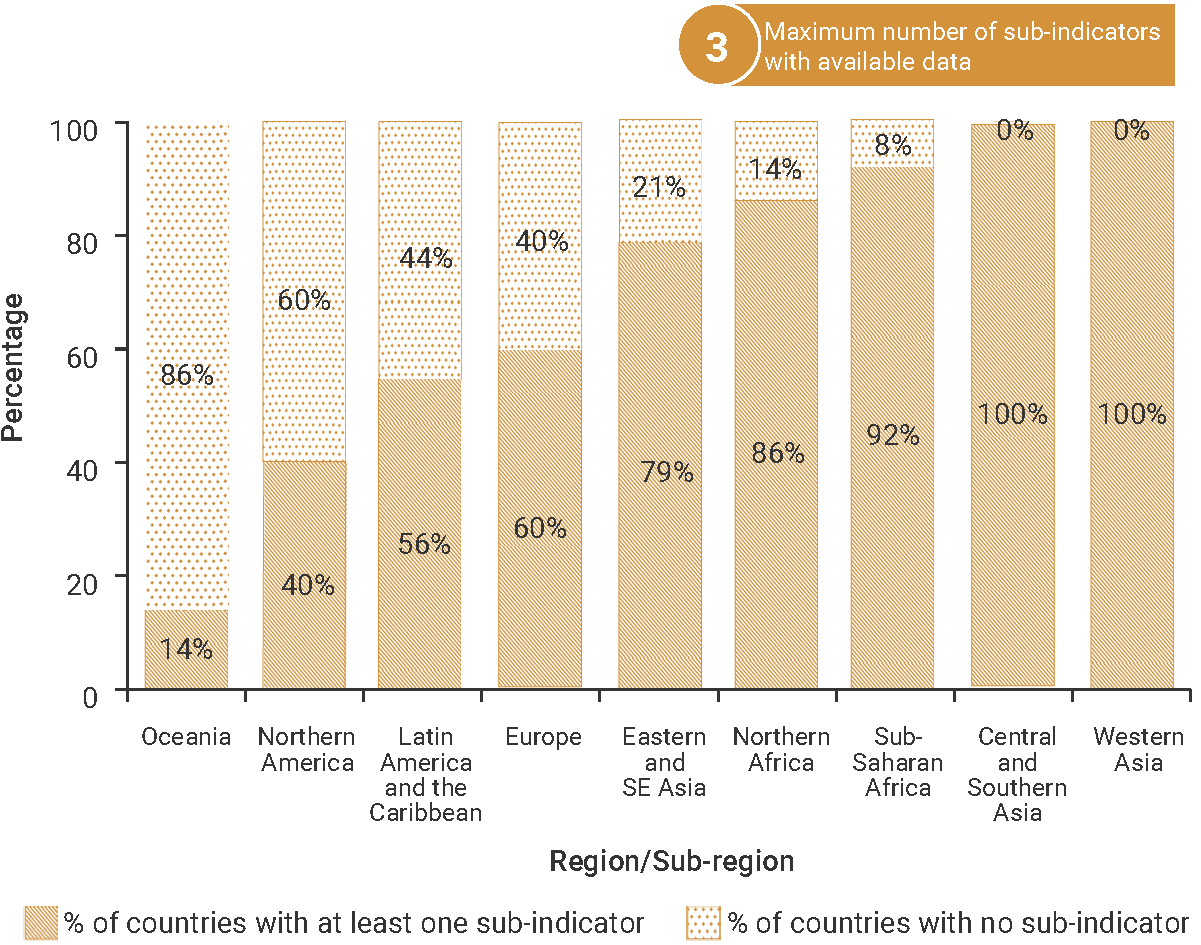SDG Indicator 12.c.1: Amount of fossil-fuel subsidies (production and consumption) per unit of GDP
1. Key features and metadata
Definition: This indicator measures the amount of fossil fuel subsidies, including: 1) direct transfer of government funds, 2) induced transfers, and – optionally – 3) tax expenditure, other revenue foregone, and underpricing of goods and services.
| Sub-indicator | Disaggregated by |
|---|---|
|
ER_FFS_CMPT_CD Fossil-fuel subsidies (consumption and production) (billions of nominal USD) |
No current data disaggregation available.
|
|
ER_FFS_CMPT_GDP Fossil-fuel subsidies (consumption and production) as a proportion of total GDP (%) |
|
|
ER_FFS_CMPT_PC_CD Fossil-fuel subsidies (consumption and production) per capita (nominal USD) |
Sources of information: National Statistical Offices and international estimates from the Organisation for Economic Cooperation and Development (OECD), the International Energy Agency (IEA) and the International Monetary Fund (IMF).
Related SDG Indicators: all SDG7 Indicators.
2. Data availability by region, SDG Global Database, as of 02 July 2025

3. Proposed disaggregation, links to policymaking and its impact
| Proposed disaggregation | Link to policymaking | Impact |
|---|---|---|
|
Amount of fossil-fuel subsidies (production and consumption) per unit of GDP, by type of subsidy (billions of nominal USD) (IEA, OECD and Eurostat 2004):
|
This is useful information for decision-makers to examine the detail of financial benefits granted by a government or any public body to economic actors to adjust, where necessary, subsidy schemes as well as to ensure transparency of public policy.Identifying the amounts of subsidies used for production and consumption separately provides the opportunity to develop targeted policies to phase-out such subsidies. The detailed monitoring of fossil fuel subsidies is a prerequisite to the gradual halting of inefficient subsidies, as approved under international agreements, for promoting sustainable and resilient paths. This disaggregation is in line with the WTO agreement on subsidies (World Trade Organization [WTO] 1994). |
Governments will need to take measures to accelerate structural economic changes and diversify their energy supply (e.g. via renewable energy) to increase their independence,prevent the creation of energy market distortions through the allocation of perverse subsidies and accelerate the transition towards cleaner energies and neutral carbon economies (International Institute for Sustainable Development [IISD] 2017; UNEP 2021h). Budget savings realized through the removal of subsidies can then be allocated to more pressing development issues such as poverty reduction, health improvement, gender equality, or providing universal access to clean energy. |
|
Amount of fossil-fuel subsidies (production and consumption), by type of activity (billions of nominal USD)(UNEP 2019f):
|

